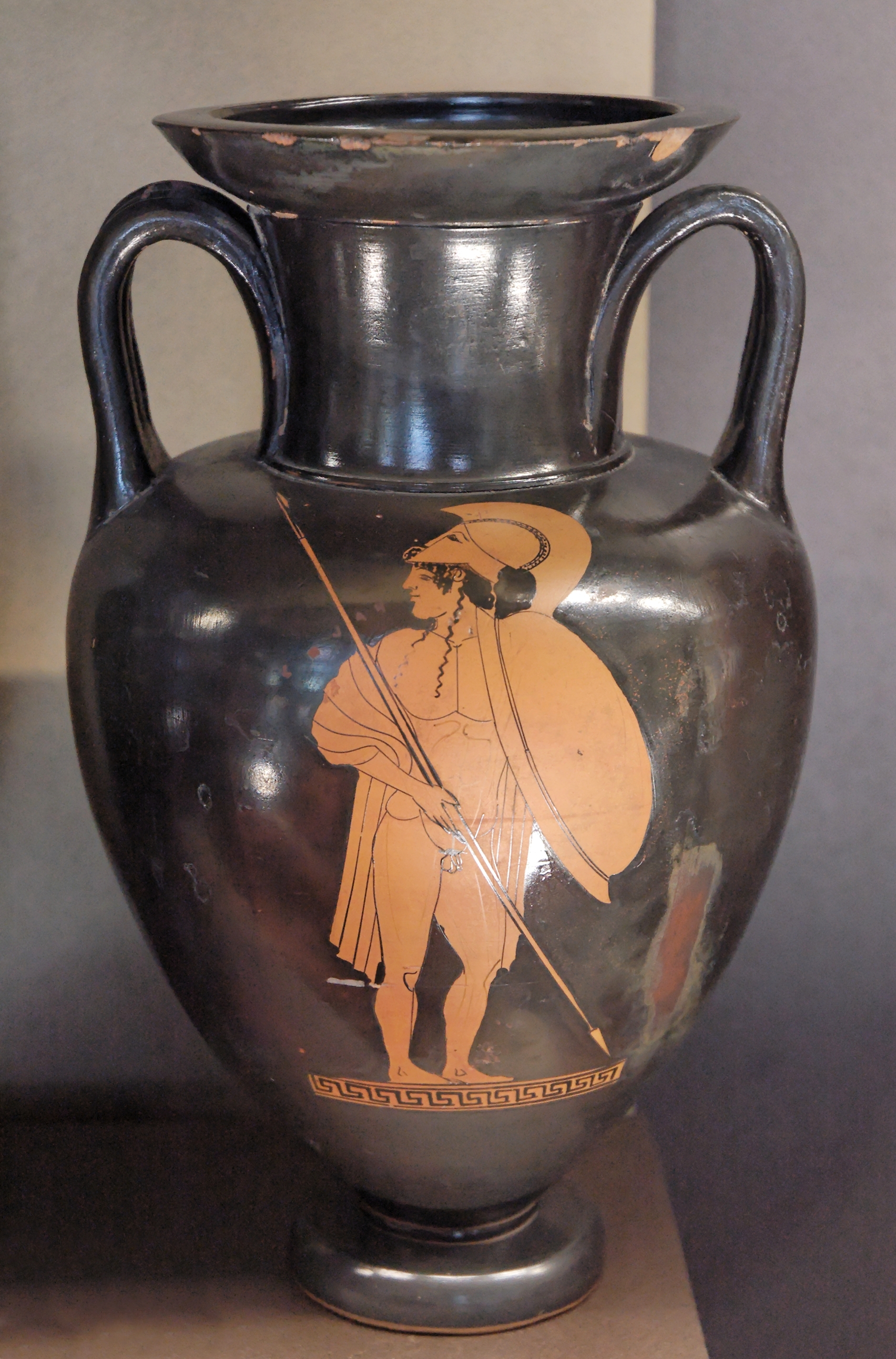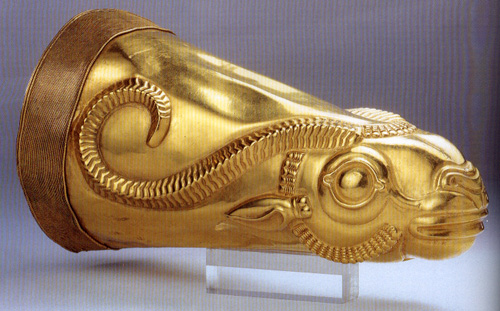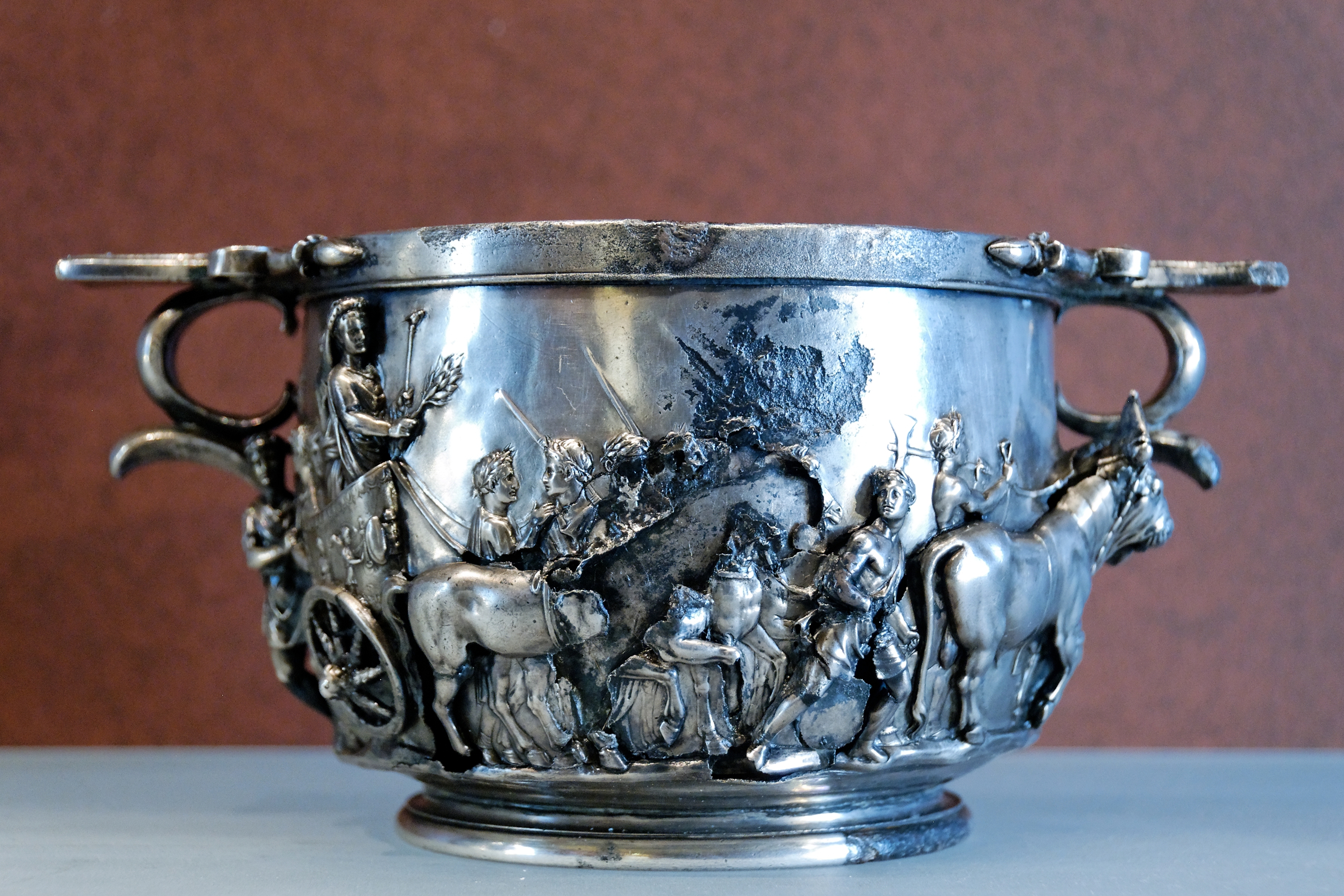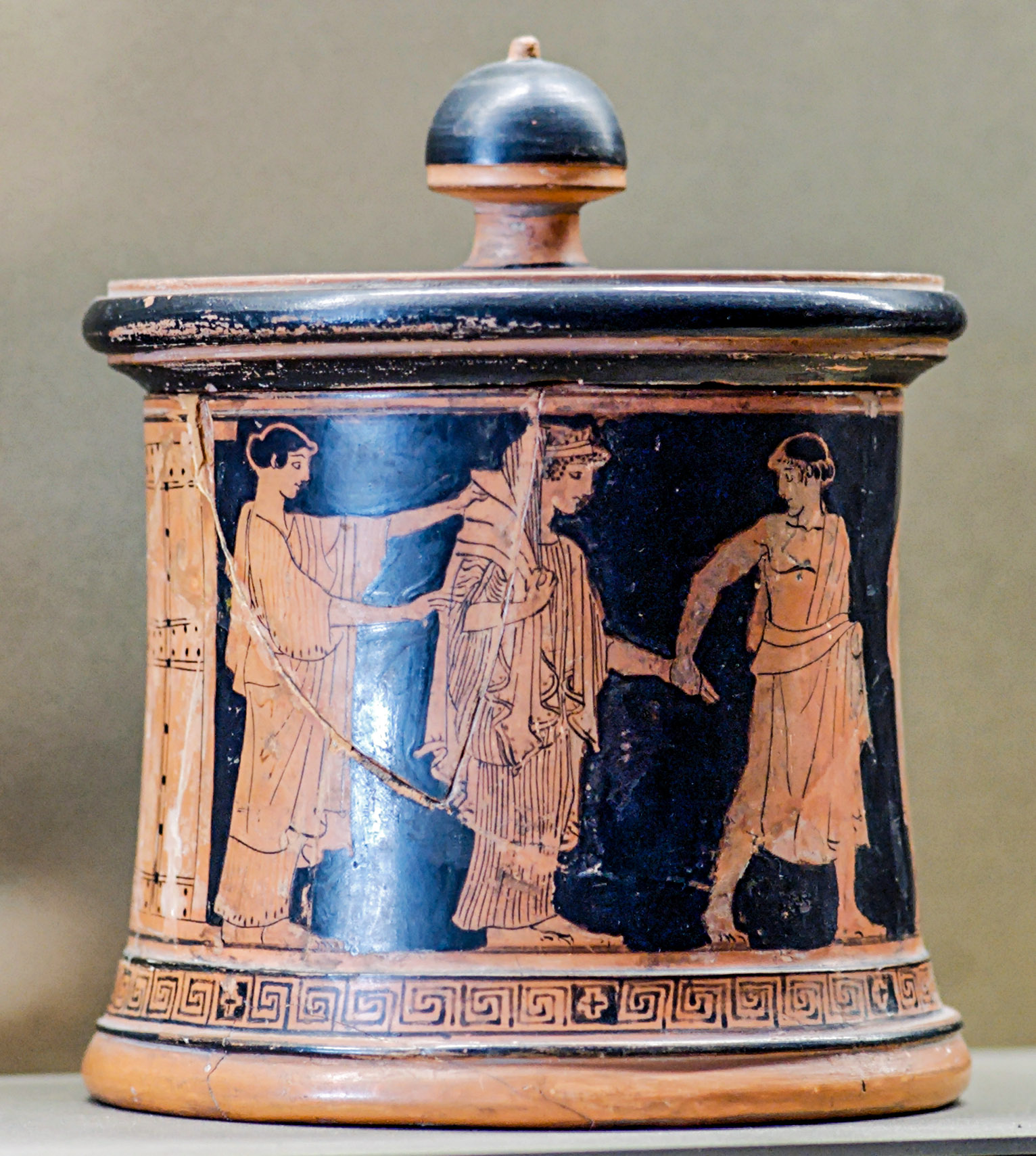|
Typology Of Greek Vase Shapes
The pottery of ancient Greece has a long history and the form of Greek vase shapes has had a continuous evolution from Minoan pottery down to the Hellenistic period. As Gisela Richter puts it, the forms of these vases find their "happiest expression" in the 5th and 6th centuries BC, yet it has been possible to date vases thanks to the variation in a form’s shape over time, a fact particularly useful when dating unpainted or plain black-gloss ware. The task of naming Greek vase shapes is by no means a straightforward one (by convention the term "vase" has a very broad meaning in the field, covering anything that is a vessel of some sort). The endeavour by archaeologists to match vase forms with those names that have come down to us from Greek literature began with Theodor Panofka’s 1829 book ''Recherches sur les veritables noms des vases grecs'', whose confident assertion that he had rediscovered the ancient nomenclature was quickly disputed by Gerhard and Letronne. A few surv ... [...More Info...] [...Related Items...] OR: [Wikipedia] [Google] [Baidu] |
Neck-amphora Antilochus Louvre G213
An amphora (; grc, ἀμφορεύς, ''amphoreús''; English plural: amphorae or amphoras) is a type of container with a pointed bottom and characteristic shape and size which fit tightly (and therefore safely) against each other in storage rooms and packages, tied together with rope and delivered by land or sea. The size and shape have been determined from at least as early as the Neolithic Period. Amphorae were used in vast numbers for the transport and storage of various products, both liquid and dry, but mostly for wine. They are most often ceramic, but examples in metals and other materials have been found. Versions of the amphorae were one of many shapes used in Ancient Greek vase painting. The amphora complements a vase, the pithos, which makes available capacities between one-half and two and one-half tons. In contrast, the amphora holds under a half-ton, typically less than . The bodies of the two types have similar shapes. Where the pithos may have multiple sma ... [...More Info...] [...Related Items...] OR: [Wikipedia] [Google] [Baidu] |
Aryballos
An aryballos (Greek: ἀρύβαλλος; plural aryballoi) was a small spherical or globular flask with a narrow neck used in Ancient Greece."aryballos" in ''The New Encyclopædia Britannica''. Chicago: Encyclopædia Britannica Inc., 15th edn., 1992, Vol. 1, p. 611. It was used to contain perfume or oil, and is often depicted in vase paintings being used by athletes during bathing. In these depictions, the vessel is at times attached by a strap to the athlete's wrist, or hung by a strap from a peg on the wall. The shape of the aryballos originally came from the oinochoe of the Geometric period of the 9th century BCE, a globe-shaped wine jar. By the Proto-Corinthian period of the following century, it had attained its definitive shape, going from spherical to ovoid to conical, and finally back to spherical. This definitive form has a wide, flat mouth, and a single small handle. Some later variations have bell-shaped mouths, a second handle, and/or a flat base. Potters also created ... [...More Info...] [...Related Items...] OR: [Wikipedia] [Google] [Baidu] |
Rhyton
A rhyton (plural rhytons or, following the Greek plural, rhyta) is a roughly conical container from which fluids were intended to be drunk or to be poured in some ceremony such as libation, or merely at table. A rhyton is typically formed in the shape of an animal's head. Items were produced over large areas of ancient Eurasia, especially from Persia to the Balkans. Many have an opening at the bottom through which the liquid fell; others did not, and were merely used as drinking cups, with the characteristic that they could not usually be set down on a surface without spilling their contents. The English word ''rhyton'' originates in the ancient Greek word ' (''rhy̆tón ''or'' rhŭtón''). The conical rhyton form has been known in the Aegean region since the Bronze Age, or the 2nd millennium BC. However, it was by no means confined to that region. Similar in form to, and perhaps originating from, the drinking horn, it has been widespread over Eurasia since prehistoric tim ... [...More Info...] [...Related Items...] OR: [Wikipedia] [Google] [Baidu] |
Skyphos
A ''skyphos'' ( grc, σκύφος; plural ''skyphoi'') is a two-handled deep wine-cup on a low flanged base or none. The handles may be horizontal ear-shaped thumbholds that project from the rim (in both Corinthian and Athenian shapes), or they may be loop handles at the rim or that stand away from the lower part of the body. ''Skyphoi'' of the type called '' glaux'' (owl) have one horizontal and one vertical thumbhold handle. Examples Early ''skyphoi'' were made during the Geometric period. Corinth set the conventions that Athens followed. Over a long period the shape remained the same while the style of decoration changed. ''Skyphoi'' were also made of precious metals, generally silver and gold leaf, many examples exist. One possible, well-preserved example is the Warren cup,In his notes, John Pollini states that uncertainty about the correct name of many ancient drinking vessels exists, however he refers to the object with the "established classificatory term scyphus", Specif ... [...More Info...] [...Related Items...] OR: [Wikipedia] [Google] [Baidu] |
Patera
In the material culture of classical antiquity, a ''phiale'' ( ) or ''patera'' () is a shallow ceramic or metal libation bowl. It often has a bulbous indentation ('' omphalos'', "bellybutton") in the center underside to facilitate holding it, in which case it is sometimes called a ''mesomphalic phiale''. It typically has no handles, and no feet. Although the two terms may be used interchangeably, particularly in the context of Etruscan culture, ''phiale'' is more common in reference to Greek forms, and ''patera'' in Roman settings, not to be confused with the Greek () or Father. Use Libation was a central and vital aspect of ancient Greek religion, and one of the simplest and most common forms of religious practice. It is one of the basic religious acts that define piety in ancient Greece, dating back to the Bronze Age and even prehistoric Greece. Libations were a part of daily life, and the pious might perform them every day in the morning and evening, as well as to begin m ... [...More Info...] [...Related Items...] OR: [Wikipedia] [Google] [Baidu] |
Kantharos
A ''kantharos'' ( grc, κάνθαρος) or cantharus is a type of ancient Greek cup used for drinking. Although almost all surviving examples are in Greek pottery, the shape, like many Greek vessel types, probably originates in metalwork. In its iconic "Type A" form, it is characterized by its deep bowl, tall pedestal foot, and pair of high-swung handles which extend above the lip of the pot. The Greek words ''kotylos'' (κότῦλος, masculine) and ''kotyle'' (κοτύλη, feminine) are other ancient names for this same shape. The ''kantharos'' is a cup used to hold wine, possibly for drinking or for ritual use or offerings. The ''kantharos'' seems to be an attribute of Dionysos, the god of wine, who was associated with vegetation and fertility. As well as a banqueting cup, they could be used in pagan rituals as a symbol of rebirth or resurrection, the immortality offered by wine, "removing in moments of ecstasy the burden of self-consciousness and elevating man to t ... [...More Info...] [...Related Items...] OR: [Wikipedia] [Google] [Baidu] |
Kyathos
Kyathos ( grc, κύαθος, ) is the name given in modern terminology to a type of painted ancient Greek vase Ancient Greek pottery, due to its relative durability, comprises a large part of the archaeological record of ancient Greece, and since there is so much of it (over 100,000 painted vases are recorded in the Corpus vasorum antiquorum), it has exe ... with a tall, round, slightly tapering bowl and a single, flat, long, looping handle. Its closest modern parallel would be a ladle. "The kyathos has a graceful shape resembling a teacup, though a bit larger, with a high looped, flat-strap or oval handle… The terracotta kyathos was used as a ladle for dipping diluted wine from a wine mixer". References {{AncientGreece-stub Ancient Greek pot shapes ... [...More Info...] [...Related Items...] OR: [Wikipedia] [Google] [Baidu] |
Dinos
In the typology of ancient Greek pottery, the ''dinos'' (plural ''dinoi'') is a mixing bowl or cauldron. ''Dinos'' means "drinking cup," but in modern typology is used (wrongly) for the same shape as a ''lebes'', that is, a bowl with a spherical body meant to sit on a stand. It has no handles and no feet. The Dinos Painter, one of the ancient Greek artists known for vase painting Pottery is the process and the products of forming vessels and other objects with clay and other ceramic materials, which are fired at high temperatures to give them a hard and durable form. Major types include earthenware, stoneware and por ..., takes his name from the type of vase characteristic of his work.Sparkes, ''Greek Pottery'', p. 115. Dinos were used for mixing water and wine, as it was considered rude to drink straight out of the goblet, at the time. See also * Dinos of the Gorgon Painter * Ancient Greek vase painting * Pottery of ancient Greece References Ancient Greek pot ... [...More Info...] [...Related Items...] OR: [Wikipedia] [Google] [Baidu] |
Krater
A krater or crater ( grc-gre, , ''kratēr'', literally "mixing vessel") was a large two-handled shape of vase in Ancient Greek pottery and metalwork, mostly used for the mixing of wine with water. Form and function At a Greek symposium, kraters were placed in the center of the room. They were quite large, so they were not easily portable when filled. Thus, the wine-water mixture would be withdrawn from the krater with other vessels, such as a ''kyathos'' (pl. ''kyathoi''), an ''amphora'' (pl. ''amphorai''), or a ''kylix'' (pl. ''kylikes''). In fact, Homer's ''Odyssey'' describes a steward drawing wine from a krater at a banquet and then running to and fro pouring the wine into guests' drinking cups. The modern Greek word now used for undiluted wine, ''krasi'' ( κρασί), originates from the ''krasis'' (''κράσις'', i.e., mixing) of wine and water in kraters. Pottery kraters were glazed on the interior to make the surface of the clay more impervious for holding wate ... [...More Info...] [...Related Items...] OR: [Wikipedia] [Google] [Baidu] |
Symposia
''Symposia'' is a genus of South American araneomorph spiders in the family Cybaeidae, and was first described by Eugène Simon in 1898. Species it contains six species in Venezuela Venezuela (; ), officially the Bolivarian Republic of Venezuela ( es, link=no, República Bolivariana de Venezuela), is a country on the northern coast of South America, consisting of a continental landmass and many islands and islets in th ... and Colombia: *'' Symposia bifurca'' Roth, 1967 – Venezuela *'' Symposia columbiana'' Müller & Heimer, 1988 – Colombia *'' Symposia dubiosa'' Roth, 1967 – Venezuela *'' Symposia sexoculata'' Roth, 1967 – Venezuela *'' Symposia silvicola'' Simon, 1898 ( type) – Venezuela *'' Symposia umbrosa'' Simon, 1898 – Venezuela References External links Araneomorphae genera Cybaeidae Taxa named by Eugène Simon {{Araneomorphae-stub ... [...More Info...] [...Related Items...] OR: [Wikipedia] [Google] [Baidu] |
Pyxis (vessel)
A ''pyxis'' (, plural ''pyxides'') is a shape of vessel from the classical world, usually a cylindrical box with a separate lid. Originally mostly used by women to hold cosmetics, trinkets or jewellery, surviving ''pyxides'' are mostly Greek pottery, but especially in later periods may be in wood, metal, ivory, or other materials. The name derived from Corinthian boxes made of wood from the tree ''puksos'' (boxwood), that also came with covers. The shape of the vessel can be traced in pottery back to the Protogeometric period in Athens, however the Athenian ''pyxis'' has various shapes itself. At first, the two varieties of ''pyxis'' included the pointed and the flat-bottomed. The pointed ''pyxis'' didn't last much longer than the ninth century BCE, while the flat-bottomed continued into the late Geometric. It also continued to grow larger and more squat in proportions. The cover often depicts elaborately sculpted handles and the walls tend to be somewhat convex. During the ... [...More Info...] [...Related Items...] OR: [Wikipedia] [Google] [Baidu] |
Stamnos
A stamnos (plural stamnoi) is a type of Greek pottery Ancient Greek pottery, due to its relative durability, comprises a large part of the archaeological record of ancient Greece, and since there is so much of it (over 100,000 painted vases are recorded in the Corpus vasorum antiquorum), it has exe ... used to store liquids. Stamnoi had a foot, wide mouths, lids and handles on their shoulders. The earliest known examples come from archaic Laconia and Etruria, and they began to be manufactured in Athens around 530 BC. References Works cited * * External links {{AncientGreece-archaeology-stub Ancient Greek pot shapes ... [...More Info...] [...Related Items...] OR: [Wikipedia] [Google] [Baidu] |









